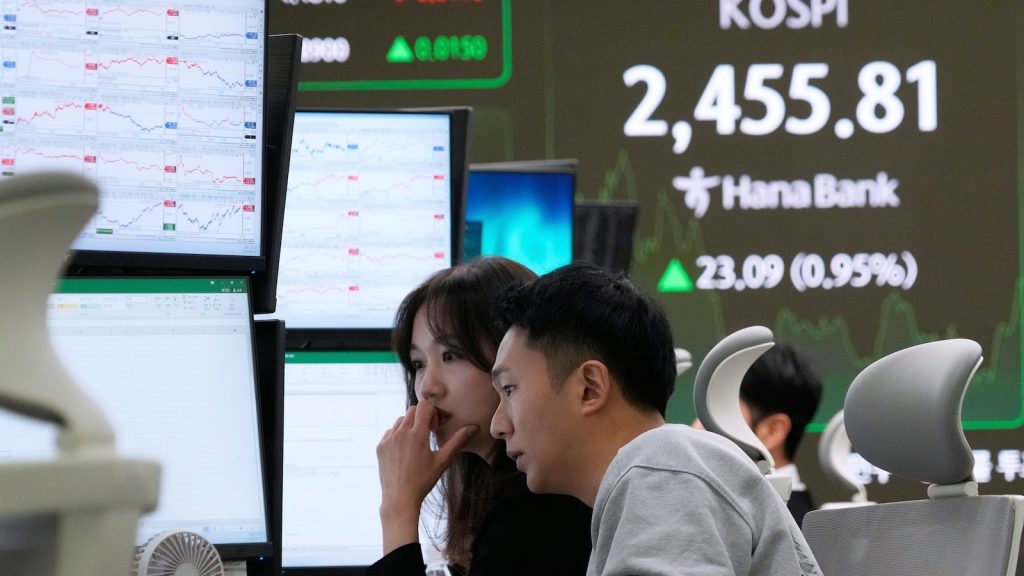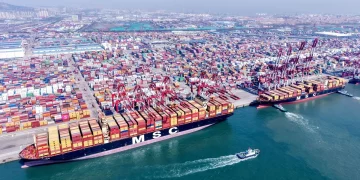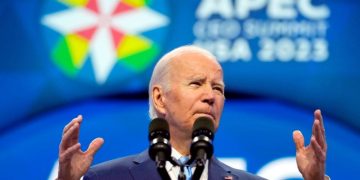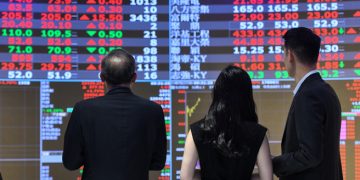The rise of protectionism in global trade has become one of the defining features of the 21st century’s economic landscape. Protectionist policies, once seen as a relic of past economic eras, have re-emerged as central tools for nations seeking to safeguard domestic industries and assert economic sovereignty. From tariffs to export restrictions, governments are increasingly adopting measures that put national interests ahead of global integration, a shift that has profound implications for international investment strategies and market behavior.
The historical roots of protectionism trace back to the early economic policies of industrialized nations seeking to protect nascent industries from foreign competition. However, in the post-World War II era, economic theory shifted towards free trade as a driver of global growth. The establishment of institutions like the World Trade Organization (WTO) and the European Union (EU) epitomized this free-market philosophy. In the past decade, however, these ideologies have faced a challenge, and with rising trade tensions, the return of tariffs, and the resurgence of nationalist rhetoric, the world finds itself grappling with a new era of economic protectionism.
In this article, we’ll explore the historical context of protectionism, examine recent trends in tariff implementations, analyze their effects on key global markets, and assess the future of international economic cooperation in a protectionist world.
Historical Context of Protectionist Policies
The concept of protectionism is deeply rooted in economic history. In the 18th and 19th centuries, many industrialized nations implemented protective tariffs to foster domestic industries and shield them from foreign competition. A prime example is the US’s Smoot-Hawley Tariff Act of 1930, which raised U.S. tariffs on over 20,000 imported goods. While intended to protect American workers and industries during the Great Depression, the policy backfired, leading to retaliatory tariffs and a deepening of the global economic downturn.
In the post-World War II period, however, the prevailing consensus shifted toward free trade. The General Agreement on Tariffs and Trade (GATT) was established in 1947, and later evolved into the WTO, advocating for lower tariffs and open markets. Over the following decades, countries increasingly embraced globalization, relying on the free flow of goods, services, and capital. The growth of the global supply chain, facilitated by cheap labor and technological advancements, redefined the relationship between nations and markets, contributing to an unprecedented era of global economic integration.
Despite the prevailing global trade agreements, the seeds of protectionism never disappeared. Countries such as Japan and South Korea adopted protectionist measures to shield key industries in their early industrialization phases, while others, particularly in the developing world, have periodically reverted to import substitution policies in times of crisis.
The turn of the 21st century brought new challenges, with the rise of China as an economic powerhouse, the deindustrialization of Western economies, and the deepening of income inequality. This combination of factors has led to a renewed focus on protectionism, with major economic powers questioning the benefits of free trade.
Recent Trends in Tariff Implementations
The resurgence of protectionism in the 21st century has been most visible in the rise of tariffs and trade wars, with China and the United States at the epicenter of these tensions. The Trump administration’s “America First” policy, which led to the imposition of tariffs on over $370 billion worth of Chinese imports in 2018, marked a pivotal moment in the global trade environment. The subsequent trade war between the two largest economies in the world not only impacted bilateral trade but also sent shockwaves through global markets.
The tariffs imposed during the US-China trade war were part of a broader strategy aimed at addressing trade imbalances, intellectual property theft, and China’s growing industrial capabilities. These tariffs targeted a wide range of goods, from steel and aluminum to consumer electronics, with the US government citing national security concerns as justification. While the tariffs provided some short-term protection to domestic industries, the long-term effects were far-reaching, leading to higher prices for consumers, disruptions in global supply chains, and a shift in trade patterns.
Following the US-China trade war, other countries began to adopt similar protectionist measures. The European Union, for example, imposed tariffs on American agricultural goods in response to the Trump administration’s steel tariffs. The Brexit process further highlighted the rise of protectionist sentiment in the UK, with the government seeking to negotiate trade deals that prioritize British interests over multilateral agreements.
Simultaneously, emerging economies have also adopted protectionist measures in response to global economic pressures. For instance, India has increasingly turned to import substitution policies, particularly in the technology and manufacturing sectors, as it seeks to reduce its dependency on foreign goods. Similarly, nations across Latin America and Africa have imposed tariffs or instituted import bans to protect their agricultural and manufacturing sectors.
While the rise of tariffs has been the most visible manifestation of protectionism, it is important to note that these measures are part of a broader trend. Export restrictions, subsidies, and local content requirements have also been employed to create barriers to trade and promote domestic industries. As a result, the global economy is becoming increasingly fragmented, with countries turning inward to safeguard their own economic interests.
Effects on Stock Markets, Currencies, and Commodities
The shift toward protectionism has had significant effects on global financial markets. Stock markets, currencies, and commodities have all felt the ripple effects of trade tensions and tariff wars.
Stock Markets
Stock markets have been highly sensitive to the imposition of tariffs and the escalation of trade tensions. The US-China trade war sent global markets into periods of volatility, as investors reacted to news of new tariffs or trade negotiations. Tariffs on Chinese goods led to lower earnings projections for companies reliant on cheap imports from China, while Chinese retaliatory tariffs affected US firms. Sectors such as technology, automobiles, and consumer goods were particularly vulnerable, as they are heavily reliant on global supply chains.
At the same time, companies in industries like defense and energy benefited from protectionist policies, as governments sought to bolster domestic production in these areas. However, the overall trend has been one of caution, with investors wary of long-term trade disruptions that could harm corporate profitability and global economic growth.

Currencies
Currency markets have also been affected by protectionist policies. The imposition of tariffs often leads to changes in exchange rates, as countries adjust their monetary policies to counteract the effects of trade imbalances. For instance, the US dollar has often strengthened during periods of protectionist rhetoric, as investors view the US as a safe haven during periods of uncertainty. In contrast, emerging market currencies, such as the Chinese yuan, have faced downward pressure as tariffs and trade wars exacerbate fears of capital flight and economic slowdown.
The effects on currency markets can also be influenced by central bank policies. The Federal Reserve, for example, has occasionally adjusted interest rates in response to global trade tensions, further impacting the value of the US dollar. Meanwhile, other central banks, such as the European Central Bank (ECB) and People’s Bank of China, have responded to trade wars by devaluing their currencies to make their exports more competitive.
Commodities
Commodities, particularly raw materials such as steel, aluminum, and oil, have seen significant price fluctuations due to protectionist policies. Tariffs on steel and aluminum, for example, have increased costs for industries reliant on these materials, leading to higher prices for consumers. Conversely, some commodity exporters, particularly those in energy-producing countries, have benefited from protectionist policies that have pushed up the prices of oil and gas.
The agricultural sector has also been highly affected, with tariffs on products like soybeans and pork disrupting global supply chains. As countries impose tariffs on agricultural imports, the prices of foodstuffs have risen, leading to inflationary pressures, particularly in developing economies. However, in some cases, countries have turned to local production to fill the gap, leading to changes in global agricultural trade patterns.
Future Outlook for International Economic Cooperation
As protectionist policies continue to dominate the global economic landscape, the future of international economic cooperation looks increasingly uncertain. The foundational principles of the post-World War II trade system, based on free trade and multilateral agreements, are being called into question.
The future of organizations like the WTO and International Monetary Fund (IMF) is uncertain as nations prioritize national interests over global cooperation. Although the WTO continues to advocate for multilateral trade agreements, its ability to enforce these agreements is increasingly under threat, as seen in the US-China trade war and the Brexit negotiations. Similarly, the IMF’s role in fostering global economic stability is being challenged by the rise of regional trade blocs and national protectionist measures.
The increasing fragmentation of the global economy raises questions about the future of free trade. Will we see the emergence of regional economic blocs, such as ASEAN, Mercosur, and the African Continental Free Trade Area (AfCFTA), that prioritize intra-regional trade over global integration? Or will a more fragmented and competitive world emerge, with nations pursuing self-sufficiency and reducing their reliance on international markets?
For policymakers, the challenge will be finding a balance between protecting domestic industries and maintaining open trade relationships. As the global economy becomes more fragmented, the importance of diplomacy and negotiation will be paramount in managing trade disputes and fostering cooperation. However, the path forward will require flexibility, adaptability, and a willingness to reconsider the benefits of an interconnected world.
Conclusion
The rise of protectionism is reshaping the global economic landscape, introducing new risks and opportunities for investors. While tariffs and trade wars dominate the headlines, the broader shift toward economic nationalism is fundamentally altering the rules of investment. As markets react to these changes, understanding the
effects on stock markets, currencies, and commodities will be crucial for navigating the new world order. The future of international economic cooperation remains uncertain, but one thing is clear: the days of free trade dominance may be over, and a new era of protectionism is just beginning.































